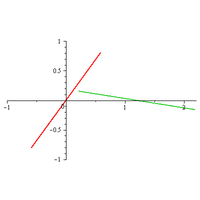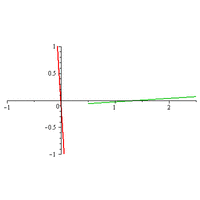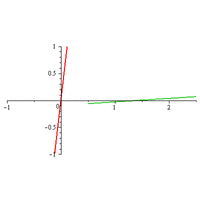laurencewithau
New member
- Joined
- Mar 25, 2019
- Messages
- 25
Hi. I once taught maths but this is beyond me. I make wind spinners from bicycle wheels and it occurred to me that it might be possible for them to interact without colliding. But I've failed every time.
To be clear: the wheels are vertical axis and in the same plane and spin on their spindles.But also they rotate around the tubes to which they are attached. I'll try to upload a video of them.
If they are next to each other on their separate tubes and if the distance between them is greater than their combined radiuses, in other words greater than their diameters, given that they are the same size, then there is no problem; but at the same time they are not interacting.
Suppose that I now run each tube through a wooden gear, the two gears being the same size with the same number of teeth. This time they are interacting and they turn at the same rate when the gears engage. This means that their position relative to each other can be controlled; for instance, I could engage the gears in such a way that the wheels are vertically parallel as the initial state, so that they are in sync and return to the same parallel position after one revolution.
Or I could start them off at right angles, one facing north or south, say, the other east or west. Given this initial angular control, I thought that there would be some way of arranging things, such that the wheel centres, in other words the tubes, would be less than one diameter apart, so that the wheels would give the illusion of passing through each other. Was I wrong or is there some way, some degree of overlap, some initial angle, some relation of gear diameter to wheel diameter, such that the wheels will always miss each other? Or can it all be answered simply with a straight " no, it's impossible"? In the video, by the way, there are no wooden gears and the wheels have wind direction arms, which would be removed. Clearly, too, the wheels are not overlapping. Thanks in advance.
To be clear: the wheels are vertical axis and in the same plane and spin on their spindles.But also they rotate around the tubes to which they are attached. I'll try to upload a video of them.
If they are next to each other on their separate tubes and if the distance between them is greater than their combined radiuses, in other words greater than their diameters, given that they are the same size, then there is no problem; but at the same time they are not interacting.
Suppose that I now run each tube through a wooden gear, the two gears being the same size with the same number of teeth. This time they are interacting and they turn at the same rate when the gears engage. This means that their position relative to each other can be controlled; for instance, I could engage the gears in such a way that the wheels are vertically parallel as the initial state, so that they are in sync and return to the same parallel position after one revolution.
Or I could start them off at right angles, one facing north or south, say, the other east or west. Given this initial angular control, I thought that there would be some way of arranging things, such that the wheel centres, in other words the tubes, would be less than one diameter apart, so that the wheels would give the illusion of passing through each other. Was I wrong or is there some way, some degree of overlap, some initial angle, some relation of gear diameter to wheel diameter, such that the wheels will always miss each other? Or can it all be answered simply with a straight " no, it's impossible"? In the video, by the way, there are no wooden gears and the wheels have wind direction arms, which would be removed. Clearly, too, the wheels are not overlapping. Thanks in advance.



